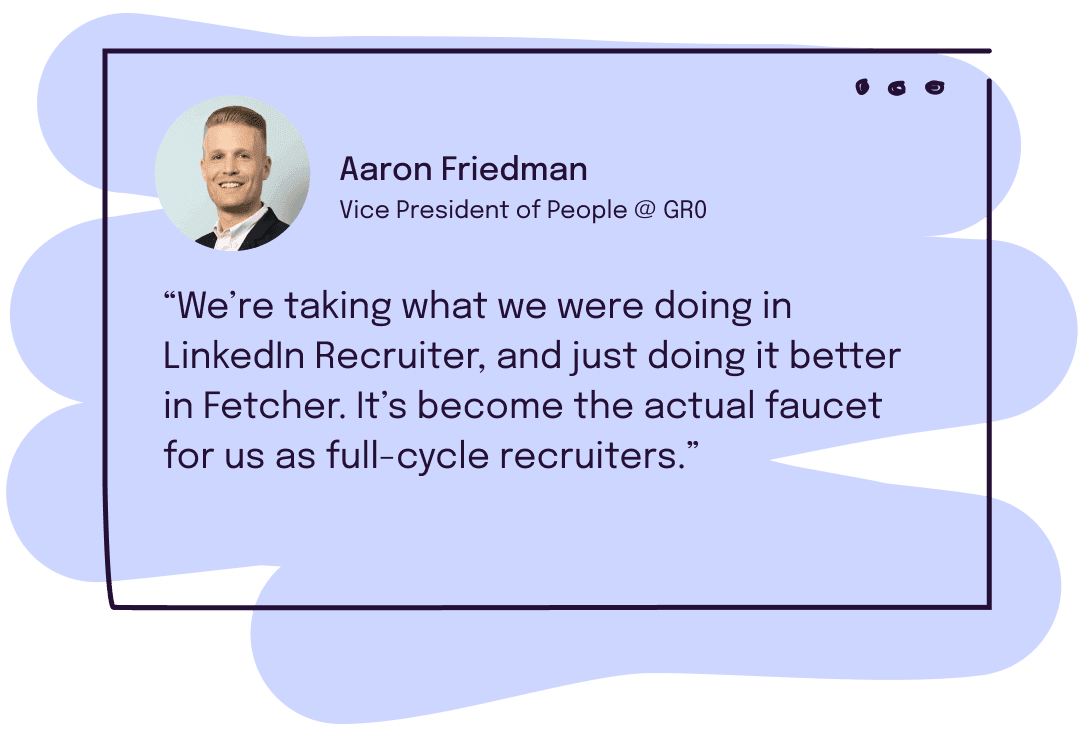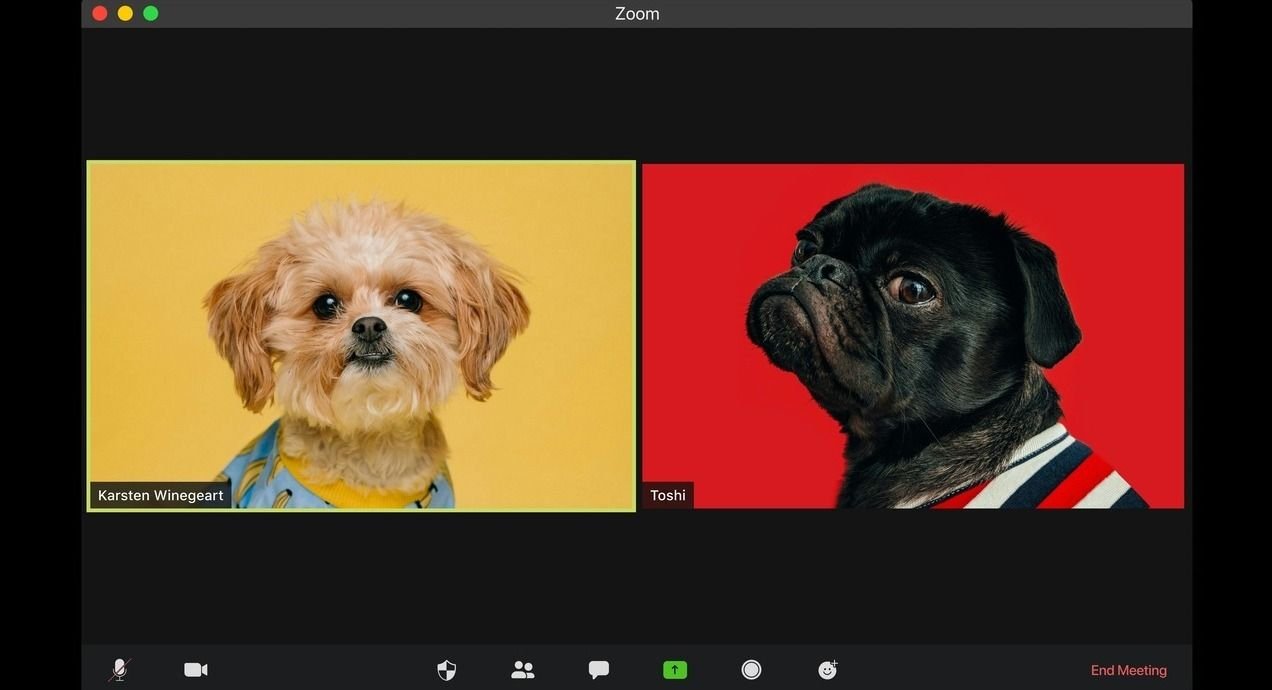When it comes to recruiting tech, the options seem endless. New technology for recruiters is emerging all the time. On the surface, teams benefit from having a variety of platforms to choose from. However, with so many tools available, choosing the right one can be daunting.
Recruiting tech, also known as technology for recruiters, includes tools and platforms that streamline the hiring process. These technologies help recruiters efficiently source, attract, assess, and hire talent.
Companies have recognized the value of investing in this technology. According to an Oracle survey, 78% of HR professionals agree that their tech stack improves productivity. The same percentage also agree that their recruitment tech stack enhances the employee experience within their organization.
However, it's not always straightforward where different recruiting software fits in the hiring funnel and adoption can be a challenge. Talent Tech Lab's Talent Acquisition Ecosystem Report identifies 14 different areas of recruiting tech, from college recruiting platforms to market intelligence tools. That's a lot to break down!
Let's tackle a few of the main areas of recruiting technology and explore the types of tools that fit into each.

Sourcing candidates
Sourcing is usually the first step in recruitment. It's where recruiters create candidate pipelines to fill open roles. At this stage, the primary focus is raising awareness of your company and its job openings. It can also be one of the most time-consuming areas, with some recruiters spending over 13 hours a week sourcing candidates.
Recruiters typically source candidates from two groups: active job seekers (inbound recruiting) and passive candidates (outbound recruiting). Active job seekers are actively seeking new opportunities, while passive candidates are content in their current roles but may be open to the right offer. Utilizing advanced recruiting technologies can significantly improve outreach and engagement with both groups.
Recruiting tech for sourcing active job seekers
-
Job Boards and Aggregators: Websites like Indeed, ZipRecruiter, and Glassdoor allow recruiters to post positions and reach a wide audience of job seekers.
-
Company Career Sites: Applicant Tracking Systems like Employ, Greenhouse, and many others offer you the ability to create web pages that list current job openings and provide insights into company culture, benefits, and values. This attracts candidates who are specifically interested in your organization.
-
Staffing Firms and Agencies: External organizations like Robert Walters, Swing Search, and MRINetwork specialize in matching candidates with job openings. They vary significantly in size, but many have extensive networks that can help fill positions quickly with pre-screened talent.
-
Freelancer Platforms: Websites such as Upwork, Freelancer, and Fiverr can help teams find independent contractors that are actively seeking short-term projects or specialized tasks.
Recruiting tech for sourcing passive job seekers
-
Fetcher: Fetcher combines the best elements of various recruiting technologies to deliver qualified and interested candidates directly to recruiters' inboxes. Our technology is priced similarly to a resume database but provides the quality and vetting of a staffing firm.
-
Social Networks: Platforms like LinkedIn, X (formerly Twitter), and other industry-specific forums where professionals connect and share content. Recruiters can identify talent based on profiles and professional activities.
-
Referral Tools: Applicant Tracking Systems (listed above) often offer technology that takes the effort out of employee referrals by making it quick and easy for employees to refer their peers. They typically send reminders and incentives to employees and track referred candidates.
-
Resume Databases: Technology like HireEZ and Seekout utilize in-house and third-party web scraping to find talent from around the world. Recruiters can then use boolean searches to select their ideal qualifications.
By leveraging these tools, recruiters can save valuable time and focus more on candidate engagement and experience. Sourcing technology not only streamlines the process but also expands your reach to find the best talent, whether they are actively looking or happily employed elsewhere.

Managing candidates
Candidate management tools are often the first piece of recruiting technology businesses purchase. They centralize all the talent collected from various sources into one place and track where each candidate is in the recruitment process. These tools allow teams to stay in touch with candidates and build stronger relationships.
Recruiting technology that helps with candidate management can be classified in two buckets: Applicant Tracking Systems (ATS) and Candidate Relationship Management System (CRM). An ATS primarily focuses on managing the recruitment process by tracking applicants through each stage—from application to hiring—while a CRM is designed to nurture relationships with both active and passive candidates over the long term, enhancing engagement even before they apply.
Applicant Tracking Systems (ATS)
An Applicant Tracking System is a common recruiting technology that streamlines the hiring process by centralizing and managing candidate information. It enables talent acquisition teams to consolidate candidate records, track applicants through each stage of recruitment, monitor sourcing channels, and ensure compliance with Equal Employment Opportunity Commission (EEOC) policies. An ATS improves efficiency by automating administrative tasks and providing valuable insights into the hiring pipeline. The best Applicant Tracking Systems will have:
-
Intuitive and Accurate Search Functionality: Simple search tools that present results in an organized and logical format.
-
Seamless Integrations: Ability to integrate with other recruitment technology so data can flow effortlessly between systems.
-
Collaboration Features: Tools that allow you to work effectively with others, facilitating teamwork.
-
Customizable Workflows and Automation: Flexibility to tailor the recruitment process to your needs and automate repetitive tasks.
-
Reporting and Analytics: Built-in reporting to track key recruitment metrics and provide insights for data-driven decisions.
Candidate Relationship Management software (CRM)
In recruiting, a Candidate Relationship Management system helps recruiters nurture and manage candidates to fill positions faster. While CRM in other fields stands for Customer Relationship Management, in recruiting, it refers to Candidate Relationship Management. CRMs organize candidates and all their relevant information in a searchable database, allowing recruiters to build and maintain relationships with both active and passive candidates over time. They can send automated emails, schedule interviews and calls, and measure the success rates of various recruitment strategies. By centralizing communication and engagement efforts, CRMs enhance the candidate experience and improve recruitment efficiency. The best Candidate Relationship Management Systems will have:
-
Centralized Candidate Database: Organizes candidate profiles and interaction history in a searchable repository.
-
Automated Communication Tools: Enables personalized, automated emails and messages to nurture relationships with candidates.
-
Scheduling and Calendar Integration: Allows seamless scheduling of interviews and calls with candidates.
-
Analytics and Reporting: Provides insights into the effectiveness of recruitment strategies and candidate engagement.
-
Integration with Other Recruitment Tools: Ensures data flows smoothly between systems, such as ATS, for streamlined workflows.
In addition to automated sourcing, Fetcher also includes CRM features to help you increase engagement rates with sourced candidates. This includes sending personalized outreach and nurture campaigns from anyone in your company. With Fetcher, you can easily automate your email follow-up sequences to stay top-of-mind with candidates and engage them more quickly. Once a candidate is engaged, scheduling interviews is a breeze. You can sync your calendar and add a scheduling link directly into your email template.
ATS vs. CRM
What's the difference between an ATS and a CRM?
Organizations often choose to use both a CRM and an ATS because they serve complementary purposes: the CRM helps build and maintain a talent pipeline by engaging potential candidates, while the ATS manages the operational aspects of recruiting, such as tracking applicants through hiring stages and ensuring compliance. Using both technology together allows companies to enhance their talent acquisition strategy, improve candidate experience, streamline workflows, and gain valuable insights through combined analytics.
Other candidate engagement tools
Some other engagement tools that will often live outside the CRM and ATS inclide the following:
Recruiting text tools enable recruiters to send automated text messages to candidates. As with email, you can invite candidates to apply, create nurture campaigns, and pre-screen candidates.
Chatbots are becoming increasingly popular in recruiting. When embedded into a career page, candidates can interact with chatbots directly to ask questions, guide them to applications, and more.
Recruiting technology to promote your employer brand help you build awareness and indirectly attract top talent. There are specific platforms just for employer branding, including employer review sites and recruitment marketing platforms. More specific tools can help you create better application forms, develop more inclusive job descriptions, and create engaging video job ads.

Interviewing candidates
The interview stage is a pivotal part of the recruitment process, where you assess candidates' suitability and fit for your organization. Leveraging the right recruiting tech can significantly enhance this stage, making it more efficient and effective. From versatile video interview platforms to collaborative scheduling tools, technology for recruiters is transforming how interviews are conducted.
With the rise of remote work and the globalization of talent pools, video interviews have become an essential component of modern recruiting technology. These platforms offer numerous advantages:
-
Flexibility and Convenience: Video interviews can be conducted anytime and anywhere, eliminating geographical barriers and scheduling conflicts. Candidates can participate from the comfort of their own space, and recruiters can save time on logistics.
-
Live and Pre-Recorded Options: Recruiters can choose between live interviews for real-time interaction or pre-recorded questions that candidates can answer at their convenience. This flexibility accelerates the screening process and allows for efficient evaluation of multiple candidates.
-
Cost-Effective: Reducing the need for in-person meetings saves on travel expenses and allows companies to allocate resources more efficiently.
-
Enhanced Features: Many video interview tools come with additional functionalities like screen sharing, virtual whiteboards, and the ability to record sessions. This recruiting tech enables more interactive interviews and provides the option to review or share recordings with team members who couldn't attend.
Using the right video interview platform helps recruiters connect with candidates remotely without the risk of "no-show" interviews. Automated reminders and easy access links—features of modern technology for recruiters—encourage participation, ensuring a smoother interview process.
Screening & assessments
The screening and assessment stage is a critical component of the recruitment process, allowing recruiters to delve deeper into candidates' qualifications and suitability for a role. Leveraging advanced recruiting tech, recruiters can efficiently evaluate candidates to determine who should move forward in the hiring process. Tools in this category include background and reference check software, skills tests, behavioral assessments, and AI-powered screening solutions
Background and reference check software
Conducting thorough background and reference checks is essential for verifying a candidate's credentials and past performance. Technology for recruiters in this area automates the verification process, ensuring accuracy and compliance with legal standards. Benefits include time savings through automating the collection and verification, compliance reassurance, and data security protection.
Skills tests and behavioral assessments
Assessments provide insights into a candidate's abilities and potential fit within the company culture. They are essential because they offer a glimpse into the tasks and responsibilities associated with the role and provide unbiased data about the candidates skills or behavior which ultimately should help reduce new hires leaving prematurely. Types of assessments include:
Skills tests that can help evaluate job-specific competencies, such as coding abilities for developers or writing skills for content creators. Top assessment technology specifically for software engineers includes HackerRank, Codility, and CodeSignal.
Behavioral assessments that analyze personality traits, work styles, and cultural fit through psychometric tests.
Cognitive ability tests to help measure problem-solving skills, critical thinking, and learning capacity.
By thoughtfully incorporating advanced technology for recruiters in the screening and assessment stage, you can enhance efficiency, reduce time-to-hire, and make more informed hiring decisions—all while providing a positive and engaging experience for your candidates.
Some of this technology is relatively new; be sure to evaluate a tool's accuracy and reliability before making an investment.
Making offers
In today's highly competitive candidate market, moving swiftly when extending an offer is crucial. Once you've identified the right person for the role, any delay could result in losing them to another opportunity. This is where recruiting tech like offer letter automation software becomes invaluable.
Offer letter automation tools streamline the process by generating accurate, professional offer letters quickly. They reduce time-to-hire by eliminating manual drafting and minimizing errors that can occur when offers are written individually. These solutions often include customizable templates, e-signature capabilities, and tracking features, ensuring a smooth and efficient offer process. Many Applicant Tracking Systems or onboarding platforms already incorporate this technology for recruiters, making it easy to integrate into your existing workflow.
However, while speed and efficiency are essential, they should not replace the personal touch that makes a candidate feel truly valued. Alongside sending the formal offer letter, always reach out personally—preferably with a phone call—to express your enthusiasm about them joining your team. Human connection is irreplaceable, and a heartfelt conversation can make a significant difference in a candidate's decision to accept your offer. Speed and accuracy are important, but they should complement, not replace, genuine human interaction when making an offer.

Onboarding new hires
An effective onboarding process is crucial for setting new hires up for success and making them feel welcomed and supported from day one. In the realm of modern recruiting tech, onboarding software plays a pivotal role in creating a seamless transition for new employees while standardizing the process within your organization.
Onboarding software, a key component of technology for recruiters, automates and streamlines the myriad tasks involved in bringing a new hire onboard. These tools manage essential paperwork and documentation, ensuring compliance and reducing administrative burdens on HR teams. They offer structured workflows and checklists for both employees and HR personnel, guiding everyone through the necessary steps and ensuring nothing falls through the cracks.
Beyond administrative tasks, many onboarding platforms enhance the new hire experience by providing digital learning resources. This might include interactive tutorials, training modules, or videos that explain how to use and access internal resources, understand company policies, or get acquainted with team members and company culture. By leveraging this technology for recruiters, organizations can deliver a consistent and engaging onboarding experience that helps new employees become productive more quickly.
Integrating onboarding software into your recruiting tech stack not only improves efficiency but also positively impacts employee retention. When new hires feel supported and have clear guidance, they are more likely to stay with the company long-term. In a competitive talent market, providing an excellent onboarding experience can set your organization apart and contribute to a stronger employer brand.
Recruiting tech: In closing
The recruiting tech stack is complicated and ever-changing. With so many options, deciding which tools are right for you may feel overwhelming. Some platforms focus on one particular area of the funnel; others can do many different things and touch multiple areas of the funnel - it's just a matter of how well they do them. Even platforms with the same general functionality, like sourcing, can vary drastically in how they work. Some are more automation-based, while others provide a more accessible interface for a manual process.
As a recruiter, you know how to evaluate candidates to ensure they'll be a successful addition to your organization. Treat recruitment tools the same way by only investing in those that meet your requirements and add value to your business.
About Fetcher
Our mission is to help you engage talent that will transform your business aspirations into reality. Great talent is hard to find - that's why we offer a talent sourcing platform that not only gets your brand in front of the right candidates but also gives you a competitive edge in talent acquisition.
Begin building a relationship with your next great hire today and let Fetcher handle the rest. Learn more.




